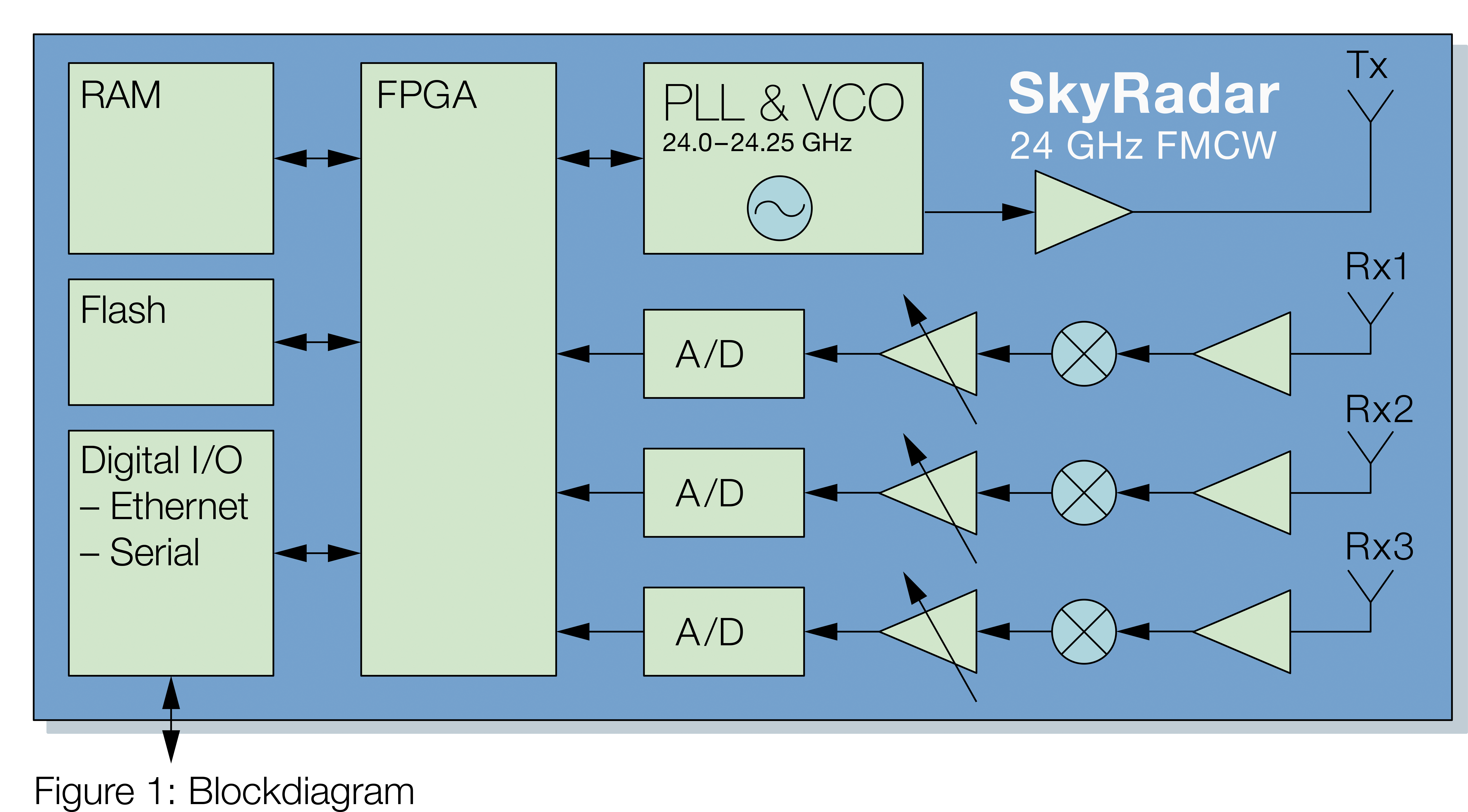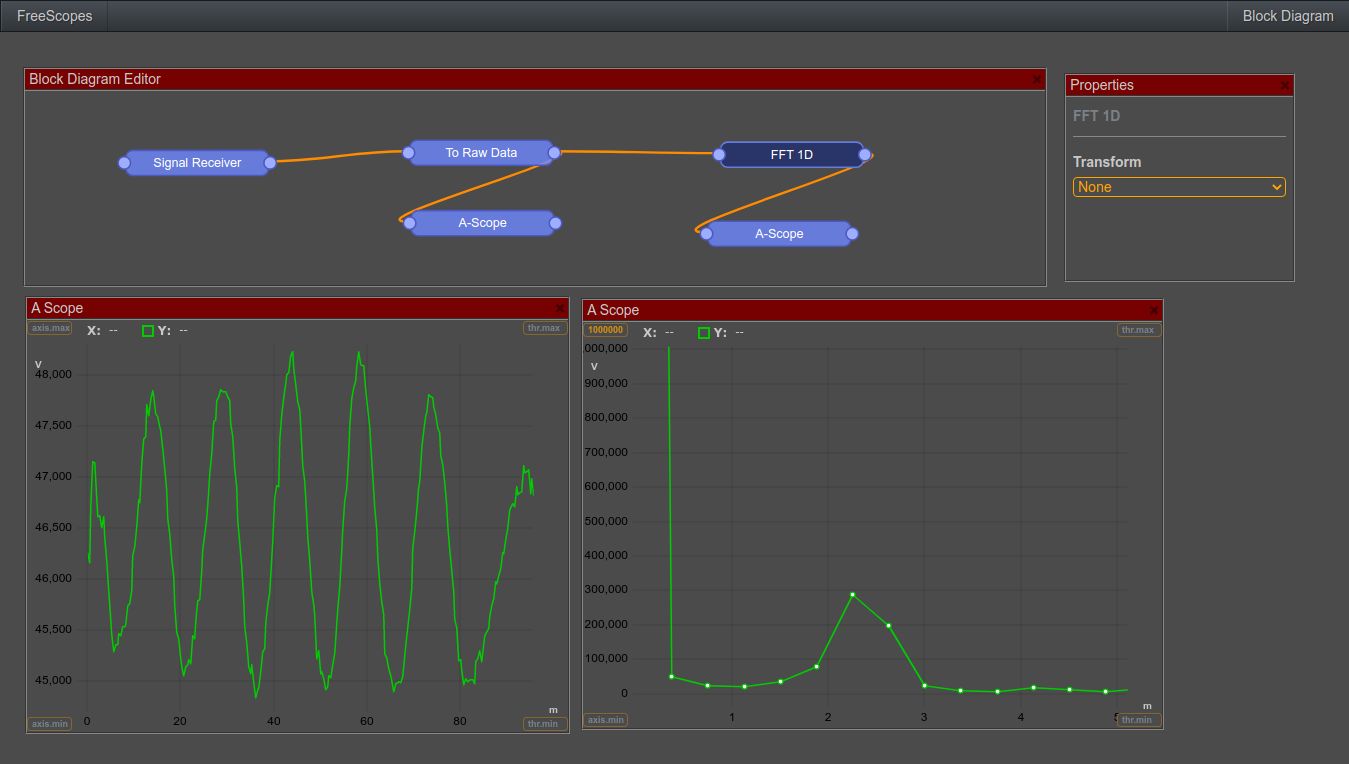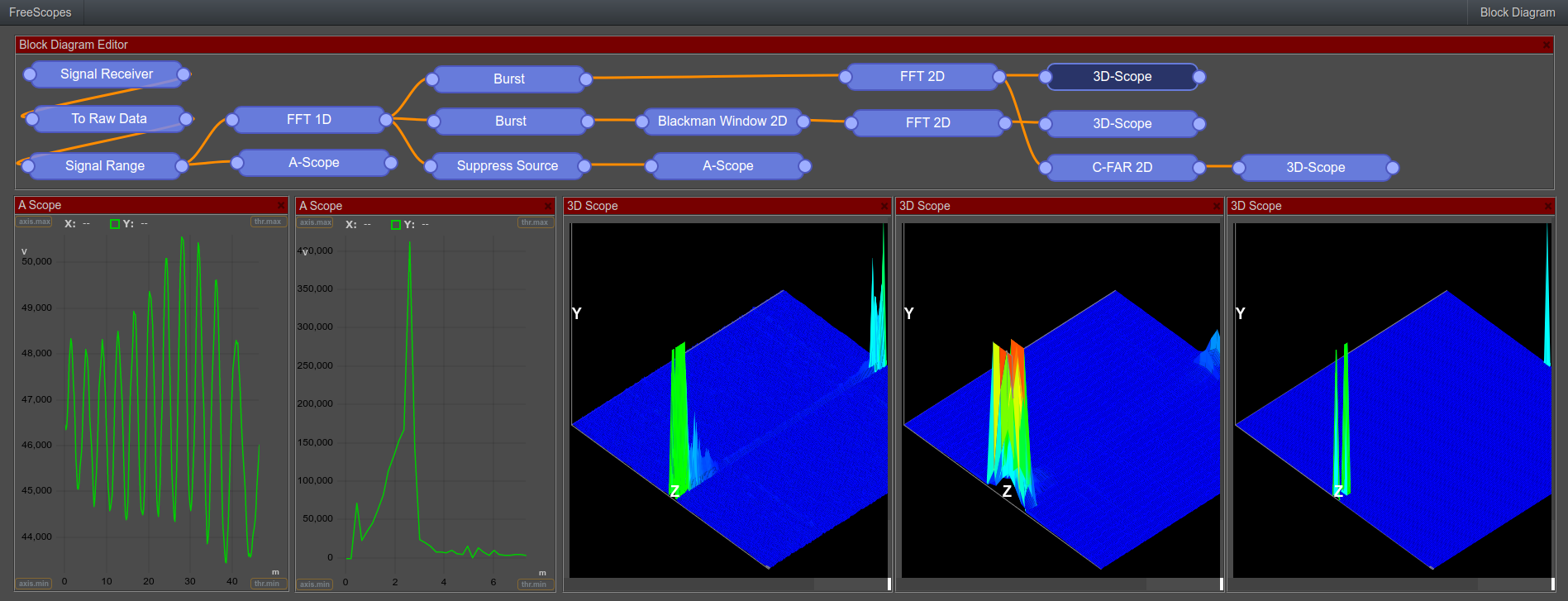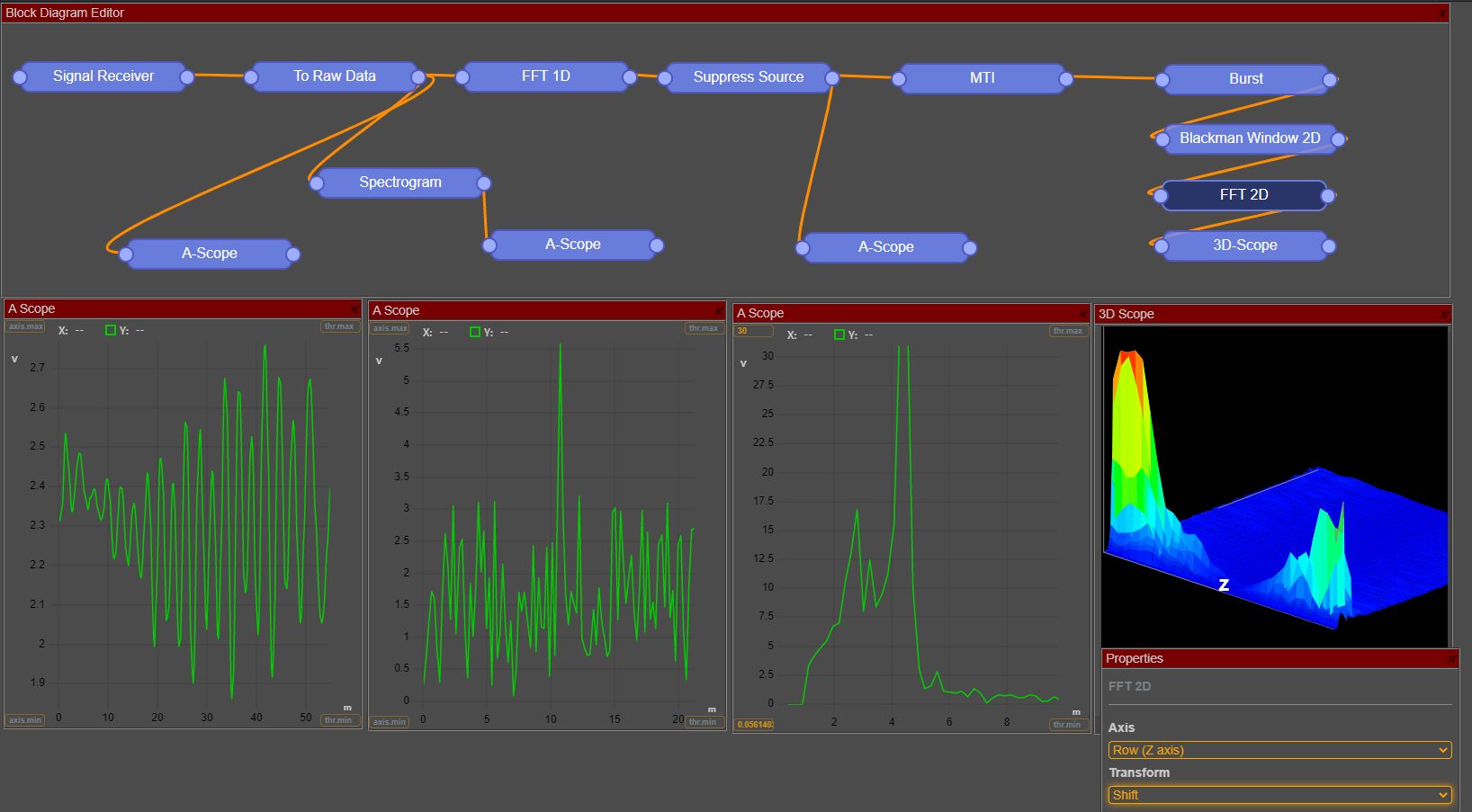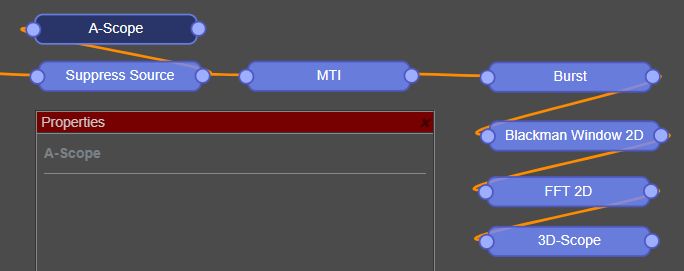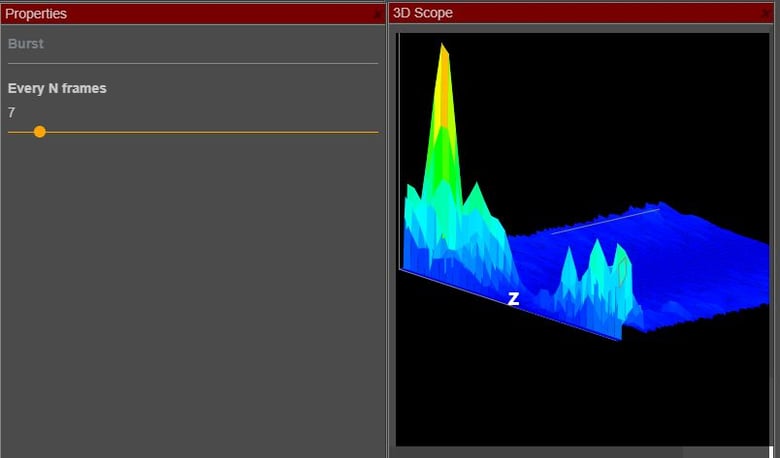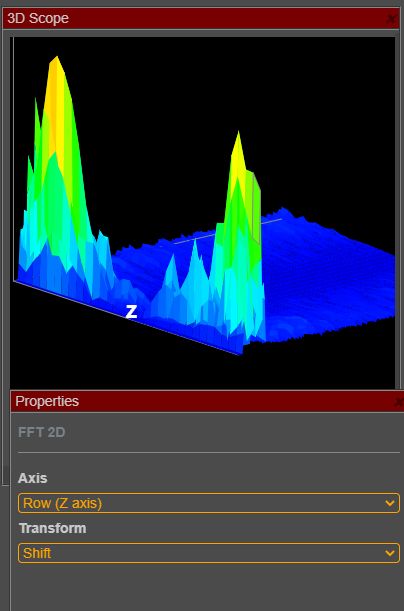With FreeScopes 7, SkyRadar's 24 GHz FMCW training radar can be applied as simply as the NextGen Pulse radars. The students can concurrently and independently apply the Fast Fourier Transform in their browsers and switch between frequency and time domain, just as needed.
In many articles we introduced the NextGen Pulse radar. There is a 2nd common radar type in air traffic control, the frequency modulated constant wave radar (FMCW). It has the advantage of providing distance and speed measurement information at the same time. It is very exact in range measurement and particularly good in close ranges. It is therefore used in airborne altimeters required during landing procedures or as early warning radars.
It 's accuracy at close range makes it a useful industrial device, e.g., as proximity switch or motion detector.
SkyRadar's 24 GHz FMCW Radar
SkyRadar offers a 24 GHz training radar for indoor and outdoor training. It has a range resolution of 15 cm (at 1 GHz bandwidth) and a comfortable range of > 20 m.
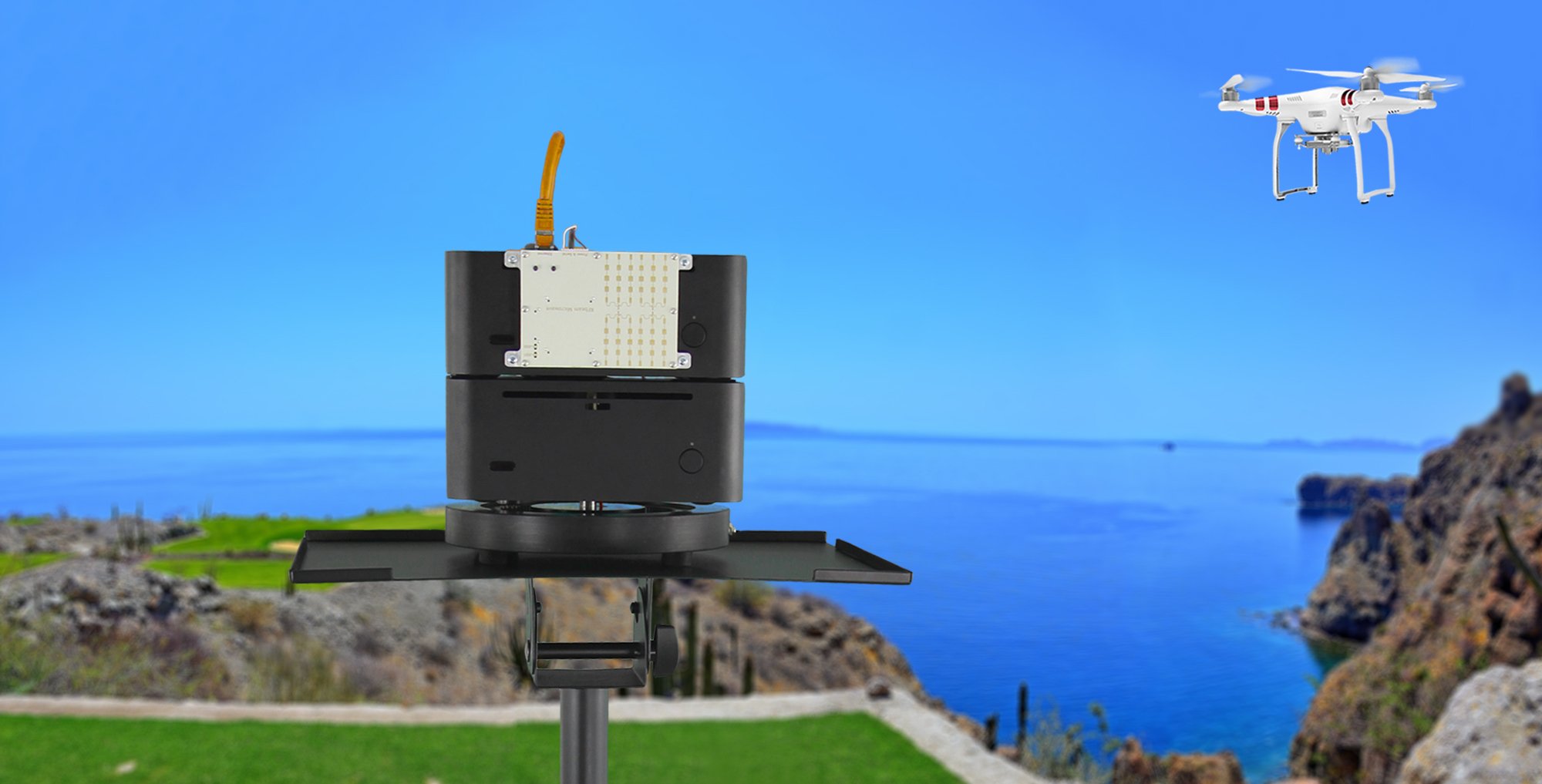
Its 3 Rx channels allow for extraordinary training and research applications.
FreeScopes 7 - the Experimentation Environment for FMCW
Trainees can work with frequency modulated IQ signals.
To measure distance and speed in the context of Air Traffic Control Applications, we can simply apply the one-dimensional Fast Fourier Transform and transform the frequency domain into the time domain.
Hereafter, the trainee can proceed just like with the pulse radar.
Benefiting from the massive learning environment of FreeScopes 7
In FreeScopes 7, students can freely and individually assemble radar block diagrams (filters, algorithms and scopes) per drag-and-drop. He / she can work on live data just in time. FreeScopes can be connected to SkyRadar's NextGen training radars and to the 24 GHz FMCW radar.
Per drag-and-drop, students can now freely and individually assemble radar block diagrams (filters, algorithms and scopes) and work on live data just in time.
Example Blockdiagram with Blackman Window, 2D-FFT, MTI, 3D-Scope
I did the following illustrative blockdiagram in a couple of minutes. But it already illustrates the power of the FMCW radar together with FreeScopes 7.
I first added an A-Scope to the raw data and we simply see frequency information. The spectrogram gives an analysis of this frequency information.
Then I did the transfer from frequency to amplitude visualization with the help of the 1 dimensional FFT. Subsequently I suppressed the source, and A-scope gives a clear amplitude information of myself moving in front of the radar (I should calibrate the maximum value in the Y-Axis to show the complete amplitude).
Now I applied the MTI to get rid of any static information. I set it to the order 3 meaning the current frame is compared with the 3rd previous frame (Read more about the MTI algorithm).
This is followed by the Burst which I set on 7 frames. It means this block produces a matrix of amplitude information over range throughout 7 frames. This leads to a fast responsiveness of the 3D-Scope, as it only needs to wait for 7 frames, until it can update its image.
As I want to apply FFT, I put the Windows-Function first, and then apply the 2D FFT to extract the Doppler information (I set it on "Shift frequency mode").
Read more about "shifting" or "mirroring the image in our dedicated article on this: "Why is the FFT Plot of a pulsed-Doppler radar mirrored?"
Included Blocks

The software includes lots of blocks, providing
- the typical scopes like A-scope, B-scope and the Plan-Position-Indicator
- Basic blocks like STC or Source Suppression
- many vector blocks with like 1-dimensional FFT, CFAR, I & Q data selectors, and more
- new multi-dimensional features like the 3-dimensional scope and algorithms like 2-dimensional CFAR or 2-dimensional FFT, Windows Functions ( Hann, Hamming, Blackman) and more
- special Air Traffic Control oriented blocks like plots, tracks and Moving Target Detection MTD
Apart from working on live data, it now allows to also work on prerecorded data.
To learn more about the many possibilities of radar training with SkyRadar and the FreeScopes Visualization environment, look at FreeScopes Basic I, Basic II and ATC I .

